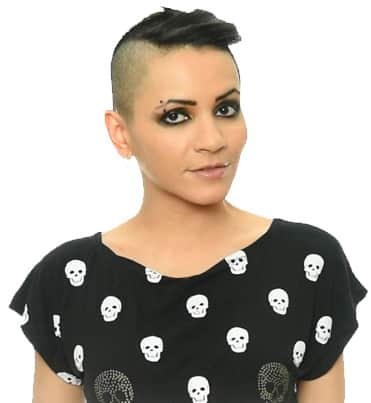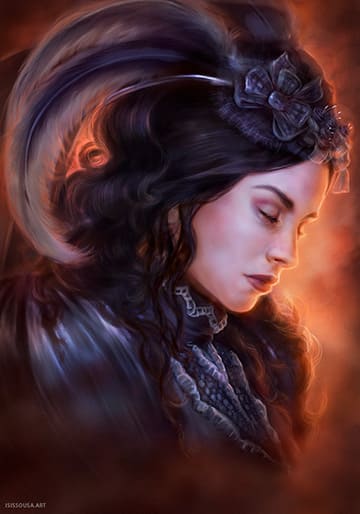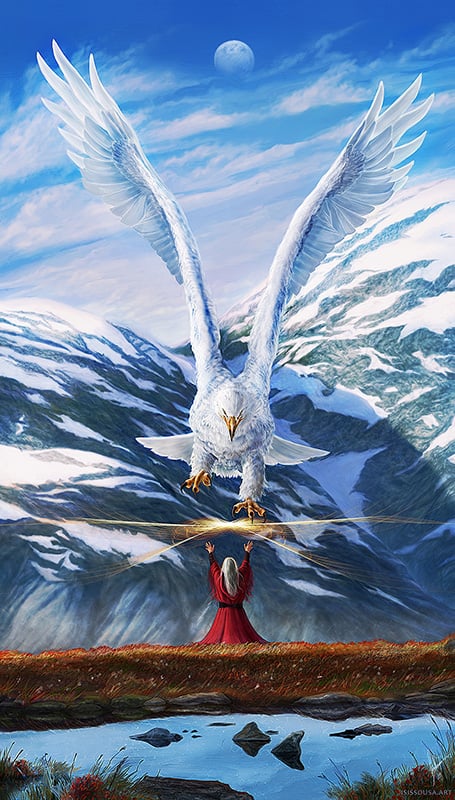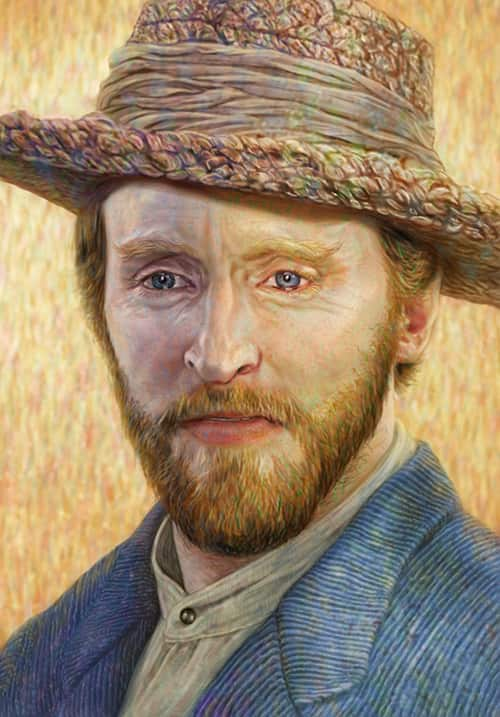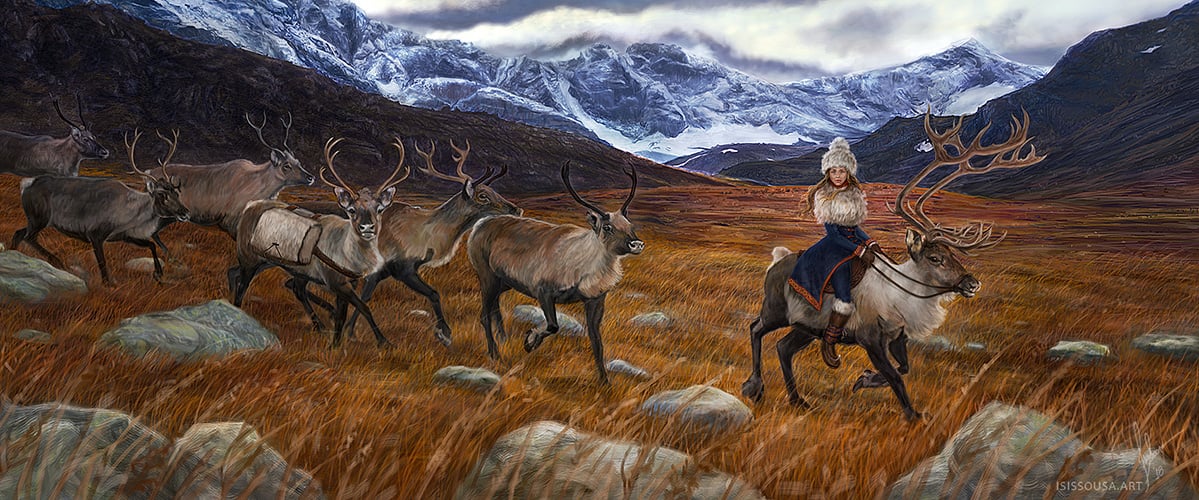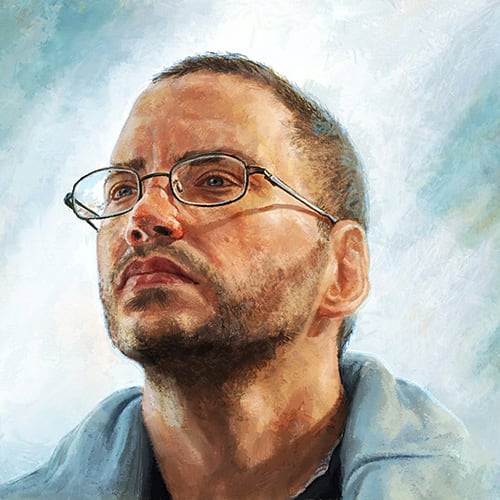It came naturally to me. Like all children, I liked to draw and paint when I was little, and the passion just continued through the years. I always had the love for classic painting and fantasy illustration when growing up, and since my teens I began appreciating digital art. I have never been to art school so I am pretty much self-taught. I started my career working with graphic design, but since the beginning I wanted to be an artist and I am very happy I took that path for the last 6 years.
At the moment I’m transitioning. I closed my company, where I created artwork for clients worldwide, and resigned from working as an art teacher in the local community. I’m devoting my time to working on a new portfolio, which will hopefully facilitate a new career working in-house at a film or game studio. Many artists start in-house, and then go freelance – I am doing the opposite. As part of the transition I am also taking the time to learn new techniques and revisit fundamentals in order to create stronger pieces.
This is a tough question because I have enjoyed working on so many projects! The book covers for Grace Draven’s ‘Radiance’ and ‘Eidolon’ novels allowed me to convey love and pain and I enjoy portraying deep, complex emotions. I also loved the book cover for Das Haus Des Rabens because I had a lot of freedom as an artist in addition to being the art director. Creating CD artwork for metal bands are always fun projects – I feel like a fan girl!
I work from a home office where I create a weekly and a daily plan. The first moments of the morning are for myself where I do a quick set of exercise, shower or meditate. Then I have breakfast and while eating I read a book, or watch a video on YouTube – always something that is inspiring or a new lesson I need to learn. Then I do a quick check across social media/art platforms to get inspired by fellow artists.
Once I am done with personal time, I check out my plan/tasks and focus 100% on the job I have to do – always listening to heavy metal, hard rock or gothic music. I take a short break each hour to stretch, get a snack and keep hydrated and a longer break for dinner in the afternoon. After dinner I come back to the office and work a couple more hours.
In the evenings I chill out. I don’t have an exact amount of hours I dedicate to work every day, it varies. And some days I take time to prepare or present classes/workshops.
I have tried painting digitally with other programs, but I think Painter has a great understanding of the needs of an artist, especially those who paint and draw in old school style and have classical art roots. It has some of the best brushes and great options for customizing them, plus great integration with the pen tablet, capturing the artist’s expressiveness within each brush stroke. It is a complete drawing and painting digital studio. I create all of my illustrations in Painter and I am so grateful for it!
My favorite brush categories are Airbrushes, Oils, Sargent and Erasers. I also love the canvas rotation and Overlay layer mode. All of these have superior quality when compared to other programs.
I keep a pretty simple workflow. For me, simplicity is key.
Income can be a factor if you don’t have a varied and solid source of jobs. I also notice downtime during the holidays and summer. You need to prepare for those factors and plan other things you can do during that time, such as organizing your office, upgrading gears, preparing a new portfolio, taking a course, etc. The other challenge can be ‘getting in the zone’ or experiencing ‘flow’. I am in flow all the time now, but in the beginning that could be a problem. There were times when I didn’t connect with a job or had a micromanaging client – these are creativity killers.
Nowadays there’s such a fast evolution in the digital arts that you need to keep improving your skills in order to compete with other artists.
My number one advice is to master the fundamentals! Please, please, please, don’t underestimate the art of composing, understanding values and lighting or color theory. That’s in fact all you need to do great work – you can forget about everything else if you master these. I overlooked them for a long time and now I am revisiting the basics.
Be sure to have a good financial base before you go full-time freelance. It may take up to 5 years for you to get your name established and a constant flow of jobs coming your way. I see some people who start out and expect to get jobs right away – when they don’t, they give up. Be patient and meanwhile, hone your craft.
Understand who you are and that your journey is unique and at your own pace. Some artists evolve their art very fast and post many pieces a month – but they have other life priorities and circumstances than you do. Embrace your unique circumstances and only care about becoming a better artist, not beating other artists.
My gear is simple, but works for what I do. I use an old PC with an Intel i7 3770K processor, 16 GB RAM, a SSD (Solid State Disk) for the operational system and programs and another SSD for the files I am working on with an NAS for backup. NVIDIA GeForce GTX 710 and two 24” Dell screens calibrated with Spyder from Datacolor and a Wacom Intuos Pro medium.
I do mostly illustration, but I also work with graphic design. So purely for illustration I use Painter from sketch to finished work – and once the image is finished, I may use a photo-editing software to ‘unsharpen/sharpen’ the image. I normally don’t do editing because I am old school: I paint everything as thoroughly as I can so I don’t need to edit afterwards.
When my job combines illustration + graphic design/layout, then I do the illustration in Painter and the rest in a photo-editing or a vector program such as CorelDRAW. I am open to using different tools to get the job done and I have fun in the process.
Learn more about Isis Sousa at Website: http://isissousa.art and YouTube: https://www.youtube.com/c/IsisSousaArt
